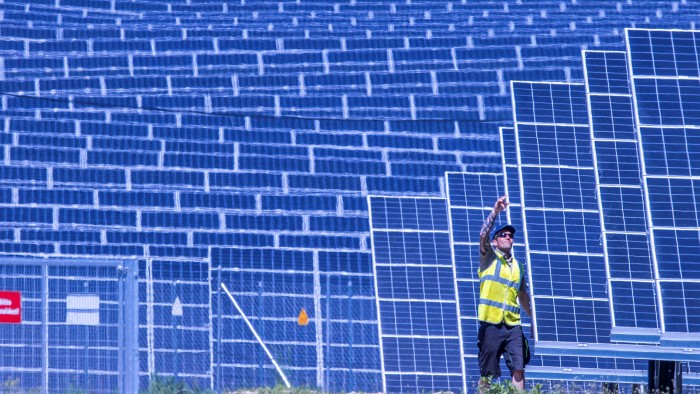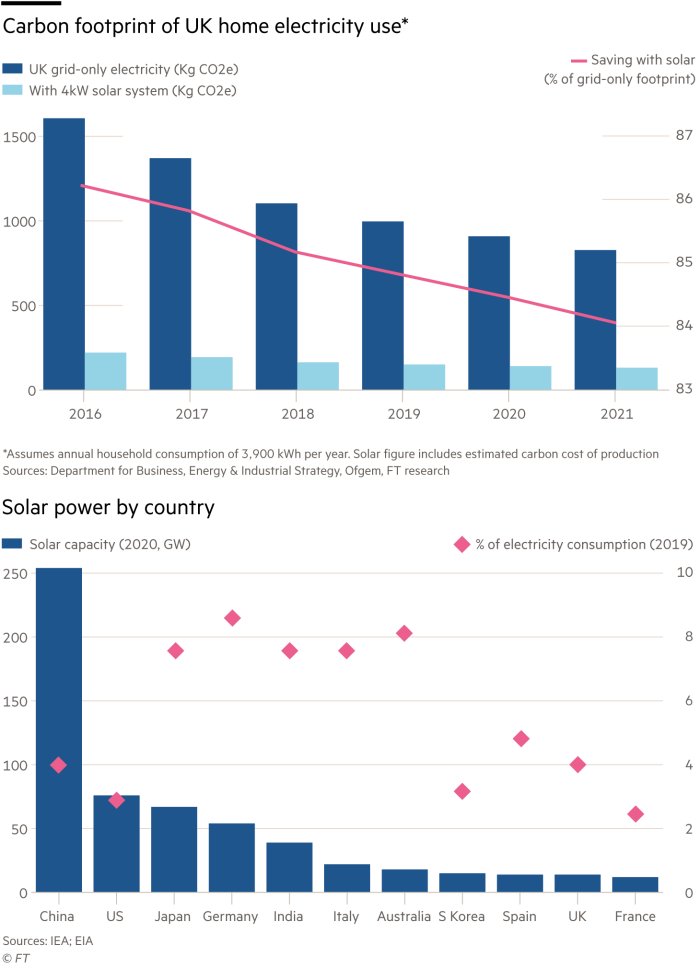Carbon counter: solar panels still shine in gloomy climates

Roula Khalaf, Editor of the FT, selects her favourite stories in this weekly newsletter.
Carbon counter is a series of Lex articles estimating the climate cost of different lifestyle choices. The other articles are here
Europe fell under the moon’s shadow during a partial solar eclipse this week. Skygazers were not the only ones paying close attention. A summer eclipse meant a sudden halt to solar panel power output just as it reaches its peak.
Panels have been rolled out across the continent in recent years in a bid to lower carbon emissions. The scale of home carbon footprint reduction depends on two factors — how carbon intensive the local electricity grid is and how much sunlight the panels receive.
For comparison Lex has considered two countries with notoriously unsettled climates: the UK and Germany.

Germany has smothered itself in solar panels, adding more last year than at any time since 2013. Last year they contributed a tenth of the country’s total electricity. Most generation happens in the summer. Owners will know that this is a peak time when their panels feed into the grid to earn their keep.
Twice weekly newsletter

Energy is the world’s indispensable business and Energy Source is its newsletter. Every Tuesday and Thursday, direct to your inbox, Energy Source brings you essential news, forward-thinking analysis and insider intelligence. Sign up here.
In our exercise carbon saved in the grid returns to homeowners. With that assumption the carbon footprint of an average family home consuming 3900 kWh per year is covered almost entirely by a 4kw home solar system in both countries. Due to less sunlight, 12 or so panels work about a tenth less effectively in the UK compared to Germany. But the UK’s cleaner power grid — about half the carbon intensity of Germany’s — means smaller carbon footprints from powering British homes.
Including those calculations, plus the carbon cost of production for panels, our 4kw home array saves almost 700kg of CO2, or 84 per cent of a UK home’s annual power-related carbon footprint. Germany’s dirtier grid lifts the CO2 saving to 90 per cent. Even in murky settings, using solar can boost a home’s carbon credentials.
The Lex team is interested in hearing more from readers, especially those relying on solar panels. Please tell us what you think in the comments section below.

Comments